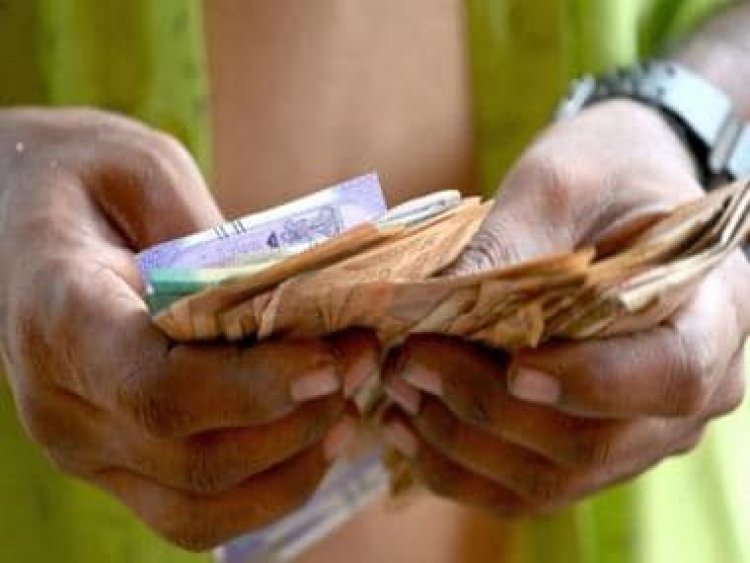Explained: What the rupee falling to low of 80 against US dollar means for you
Explained: What the rupee falling to low of 80 against US dollar means for you

The Indian rupee sank to an all-time low of 80.05 against the US dollar on Tuesday morning.
The rupee opened at 80 against the American dollar, then lost ground to quote at 80.05, registering a fall of 7 paise from the last close.
#UPDATE The Indian rupee fell to more than 80 per US dollar for the first time on record Tuesday, as the greenback extended its rally and foreign capital outflows intensifiedhttps://t.co/ooGIdK7x4U pic.twitter.com/MJUMTruwXk
— AFP News Agency (@AFP) July 19, 2022
The worry is that the fall could be even steeper, as a break of key psychological rate increases bets in favour of a free fall after, reported NDTV.
On Monday, Finance Minister Nirmala Sitharaman in Lok Sabha said that the Indian rupee has declined by about 25 per cent since 31 December 2014 when asked about the value of the local currency.
Without getting too technical, we examine and decode the reasons behind the slide in the rupee and what it means for the common man.
What does rupee to dollar value mean?
When it is reported that the rupee has fallen to a low of 80 dollars, it basically means that one needs Rs 80 to buy a single dollar.
This is important when buying not just American goods but also other goods and services (say crude oil).
Reasons for falling rupee
As has most other currencies, India’s currency has gone down in value when compared to the US dollar. On 30 December 2014, the rupee was valued at 63.33 against a dollar. On 11 July, the value once again fell to 79.41.
There are a host of reasons for this slide such as inflation, prolonged COVID-19 lockdowns in China, monetary tightening campaigns of the key central banks, and supply chain disruptions caused by the Russia-Ukraine war.
Besides, outflow of foreign portfolio capital is also one of the major reason for depreciation in Indian currency. Many foreign investors have pulled out of Indian markets owing to the interest rates rising in the US at a much faster rate than in India.
Foreign portfolio investors have withdrawn about $14 billion from Indian equity markets in 2022-23 so far.
All this combined has led to the rupee’s depreciation against the dollar.
Analysts at Emkay Wealth Management told India Today, “The Indian rupee has been adversely affected mainly by the FIIs pulling out funds from the equity market, rising crude prices, the deteriorating trade balance and dollar strengthening.”
Also read: Why dollar is in demand, why rupee is depreciating and what experts think happens next
What does this mean for aam aadmi?
The primary impact of a depreciating rupee is felt by importers as they need to spend more for the same quantity.
The most adversely affected sector will be oil and gas, India imports over 85 per cent of oil and half of the gas it consumes.
This means that the pricing of oil will increase, which, in turn, will percolate down to a host of products.
Buying cars will also become a more expensive idea as 10-20 per cent of a car’s total raw materials by value are imported.
Electronic items, such as mobile phones and other appliances are also likely to become more expensive.
Flying will also become more expensive as purchasing fuel will become costlier.
For students who wish to go abroad to study, a depreciating rupee could be an issue. This is because the fees would now be costlier in rupee-dollar comparison.
Prospective students or even existing ones may face a hike in their spending.
Another major impact of falling rupee might be felt on the tourism sector. People wanting to resume their abroad travel will end spending much higher than they would have a few days ago.
One benefit of the depreciating rupee would be exports from India will become cheaper. The Information and Technology sector would be one of the biggest gainers, as they bill most clients in US dollars. Their rupee earnings rise as the Indian currency falls.
Many financial experts note that this is the right time for foreign companies to invest in manufacturing and services in India. Moreover, this period will be a boon for India’s tourism sector.
What is being done?
Earlier, in the month the Reserve Bank of India (RBI) further liberalised norms to boost inflows of foreign exchange, including doubling the borrowing limit under the External Commercial Borrowing (ECB) route.
More foreign investments in international currency into the country would mean more demand for the rupee in exchange for buying the domestic currency-denominated Indian assets.
With inputs from agencies
Read all the Latest News, Trending News, Cricket News, Bollywood News,
India News and Entertainment News here. Follow us on Facebook, Twitter and Instagram.
What's Your Reaction?


























































